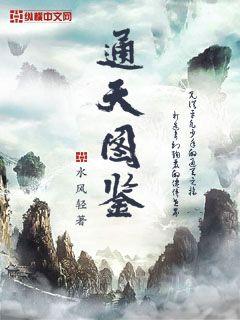
文章摘要的内容:本文探讨了在体育竞技场上,球员如何对裁判的公平性及其裁决产生影响。通过分析四个方面:球员的行为和态度、裁判的专业性、裁判的主观性以及科技辅助裁判,揭示了这些因素如何共同决定比赛的公正性和结果。
球员的行为和态度对裁判决策有重要影响。首先,球员的道德品质和职业道德是裁判评估其是否可信的重要依据。例如,体育精神和公平竞争意识能够降低球员对裁判的不良影响。
其次,球员的情绪管理能力也直接影响裁判的裁决。情绪失控的球员往往会对裁判产生不良影响,甚至导致裁判心理上的偏见或不公正。
最后,球员与裁判的沟通方式和态度也决定了裁判对球员的认可程度。尊重和理解裁判的工作是维护比赛公平性的关键因素。
裁判的专业性直接影响了裁判决策的公正性。裁判需要具备良好的规则知识和判断能力,以便在比赛中准确判罚各种情况。
裁判的技术水平和经验也是其公正裁决的保证。经验丰富的裁判能够更好地应对复杂的比赛局面,减少因个人主观而导致的不公正裁判。
此外,裁判的持续培训和评估体系对提升裁判的公正性具有重要意义。通过不断学习和专业发展,裁判能够提升其专业水平,更好地执行公正裁判。
裁判的主观性是裁判决策中不可忽视的因素。每位裁判都有其个人的观点和判断标准,这可能导致在同一场景下出现不同的裁判决策。
裁判的偏好和个人情感也会影响其裁判的公正性。一些裁判可能会对某些球员或球队有偏好,这可能影响到其对比赛的公正裁判。
因此,减少裁判的主观性,提升其客观判断能力是确保比赛公平的关键。科技辅助裁判等技术手段的引入,有助于减少人为因素对裁判决策的影响。
科技辅助裁判在提升比赛公平性方面起到了重要作用。例如,VAR技术能够提供对争议场景的多角度视频回放,帮助裁判做出更准确的决策。
科技辅助裁判不仅可以减少裁判的人为失误,还能提高裁判的决策效率。这些技术手段的引入有效地弥补了人类裁判在快速比赛中可能出现的局限性。
然而,科技辅助裁判并非万能之策,其运用仍需在技术发展和实际操作中不断完善和调整,以确保其对比赛公平性的积极影响。
总结:
综上所述,球员考裁判不仅涉及其行为和态度,还涉及裁判的专业性、裁判的主观性以及科技辅助裁判等多个方面。这些因素共同影响了比赛的公平性和结果。为了确保比赛的公正性,需要球员和裁判共同努力,同时利用科技手段来辅助裁判决策,以达到最终的公正结果。
在体育竞技场上,公平的裁决是维护比赛精神和观众信任的基础,也是体现体育道德和价值的重要体现。
文章摘要:本文详细讨论了高中体育课程资源开发与利用指南,主要从课程目标的设定、资源丰富性、教师角色以及学生参与等四个方面展开。通过深入探讨,帮助读者更好地理解如何有效利用资源提升体育课程的教学质量。
体育课程目标的设定应当注重个体差异和综合发展,既包括体育技能的提高,又考虑到学生身心健康的培养,进而提高学生的综合素质。
在设定课程目标时,需要考虑不同群体的需求,制定具体可行的目标,并结合学生特点合理分解目标实施步骤。
同时,课程目标的设定需要与学校教育教学目标相一致,保证体育教学的质量和效果。
体育课程资源应当具有多样性和丰富性,包括器材设施、教材教具、课外活动等方面。
教师需要善于利用周边资源,开展实地教学、体育比赛、实践活动等,丰富学生的体育学习体验。
同时,建立资源共享机制,互相借鉴学习,提升教学质量和水平。
教师在体育课程中的角色应当是引导者和榜样,激发学生体育学习的兴趣和热情。
教师需要关注学生个体差异,因材施教,制定个性化学习计划,帮助学生全面发展。
同时,教师要不断提升自身综合素质和专业水平,不断学习更新知识,为学生提供更好的教学服务。
学生在体育课程中的参与应当是全面的,包括课堂学习、实践活动、社团组织等多方面。
激发学生的学习兴趣和潜能,培养学生的领导力和团队合作精神,提高学生综合素质。
教师需要引导学生主动参与,促进学生的身心健康发展,使每个学生都能在体育教育中受益。
总结:
综上所述,高中体育课程资源开发与利用指南是体育教学中的关键,需要注重设定课程目标、丰富资源、教师角色和学生参与等方面。只有综合考量这些要素,才能提升体育教育的质量,帮助学生全面发展。
Certainly! Here's the structured article on "Optimizing Training Performance through Nutrition and Diet for Professional Athletes":
**Abstract:**
Professional athletes rely heavily on nutrition and diet to enhance their training performance. This article explores key factors that optimize their performance through dietary strategies. It examines the role of macronutrients, micronutrients, hydration, and timing of meals in maximizing athletic potential. By understanding and implementing these factors, athletes can achieve peak performance and maintain optimal health.
---
**1、Macronutrients:**
Macronutrients play a fundamental role in the diet of professional athletes, influencing energy levels, muscle recovery, and overall performance.
Athletes typically require a balanced intake of carbohydrates, proteins, and fats to meet their energy demands and support muscle repair.
Carbohydrates serve as a primary fuel source, especially during high-intensity activities, emphasizing the importance of adequate intake and timing to sustain performance.
Proteins are essential for muscle repair and growth, with athletes needing slightly higher amounts to recover effectively from training sessions.
Timing protein consumption around workouts is crucial for maximizing muscle synthesis and adaptation to exercise-induced stress.
A variety of protein sources, including lean meats, dairy, and plant-based options, offer athletes flexibility in meeting their nutritional needs.
Healthy fats contribute to sustained energy levels and support overall health in athletes, emphasizing sources like nuts, seeds, and fatty fish.
A balanced intake of omega-3 and omega-6 fatty acids aids in reducing inflammation and optimizing recovery post-training.
Adjusting fat intake based on training intensity and individual metabolic needs helps athletes maintain optimal body composition and performance.
Carbohydrates are critical for replenishing glycogen stores and providing quick energy during intense exercise sessions.
Choosing complex carbohydrates such as whole grains and vegetables ensures sustained energy release and supports prolonged athletic performance.
Strategic carb-loading before competitions or high-demand periods helps athletes maximize glycogen storage and enhance endurance.
---
**2、Micronutrients:**
Beyond macronutrients, micronutrients are essential for maintaining overall health, supporting immune function, and optimizing athletic performance.
Athletes require adequate intake of vitamins and minerals to support physiological processes, including bone health, oxygen transport, and muscle contraction.
Key micronutrients such as iron, calcium, vitamin D, and antioxidants play crucial roles in reducing the risk of injury and illness among athletes.
Iron is vital for oxygen transport and energy production, particularly significant for endurance athletes to prevent fatigue and optimize performance.
Calcium supports bone health and muscle function, essential for maintaining skeletal integrity and reducing the risk of stress fractures.
Ensuring sufficient intake of these minerals through diet and, if necessary, supplementation helps athletes meet their unique nutritional demands.
Vitamins such as vitamin D, C, and E contribute to immune function and recovery, aiding in the repair of muscle tissue and reducing oxidative stress.
Antioxidants from fruits, vegetables, and nuts help mitigate exercise-induced inflammation and support cellular repair processes post-exercise.
Strategies to incorporate a diverse range of micronutrient-rich foods into an athlete’s diet promote overall health and optimize training adaptations.
Hydration is critical for maintaining performance and preventing dehydration-related complications during training and competition.
Athletes should monitor fluid intake to replace losses through sweat, adjusting consumption based on environmental conditions and individual sweat rates.
Optimal hydration supports thermoregulation, nutrient transport, and cognitive function, enhancing overall athletic performance and recovery.
---
**3、Timing of Meals:**
The timing of meals and nutrient intake around training sessions is crucial for optimizing energy availability, promoting recovery, and supporting adaptation to exercise stress.
Strategic meal timing helps athletes maximize glycogen storage, enhance muscle protein synthesis, and minimize muscle breakdown.
Pre-exercise nutrition focuses on providing adequate carbohydrates for fuel and minimizing gastrointestinal distress during workouts.
Consuming a balanced meal or snack containing carbohydrates and a moderate amount of protein 2-4 hours before exercise provides sustained energy and supports muscle function.
Hydration before exercise ensures adequate fluid balance and enhances thermoregulation during physical exertion, optimizing performance and reducing the risk of dehydration.
Immediately following exercise, consuming a combination of carbohydrates and proteins within the first 30 minutes to 2 hours supports glycogen replenishment and muscle repair.
Timing protein intake post-exercise stimulates muscle protein synthesis, facilitating recovery and adaptation to training-induced stress.
Incorporating micronutrients and fluids into post-exercise meals aids in rehydration, replenishment of electrolytes, and overall recovery.
Strategically timing meals and snacks throughout the day maintains stable blood sugar levels and sustains energy for consistent training performance.
Adjusting nutrient intake based on training volume and intensity helps athletes meet their energy demands and achieve optimal nutrient timing for enhanced performance.
Individualized nutrition plans tailored to training schedules and performance goals optimize nutrient timing strategies, supporting long-term athletic success.
---
**4、Conclusion:**
Optimizing training performance through nutrition and diet involves a comprehensive approach focusing on macronutrients, micronutrients, hydration, and meal timing.
By understanding the role of each component and implementing evidence-based strategies, athletes can enhance performance, support recovery, and maintain overall health.
Continued research and personalized nutrition plans are essential to meet the unique needs of professional athletes and maximize their athletic potential.
Overall, integrating these key factors into a structured nutrition plan empowers athletes to achieve peak performance and excel in their respective sports.
### 文章摘要
约翰·尤因以其卓越的足球技艺和卓越的领导才能,超越了传奇的地位。本文将从尤因在比赛中的统治力、对球队的领导、在足球战术上的创新以及其深远的文化影响四个方面,深入探讨他在足球史上的无与伦比的影响。
---
尤因在场上的卓越表现不仅体现在技术上的精湛,更体现在对比赛节奏的掌控。他的冷静和智慧使他成为比赛的决定性因素。
尤因作为中场核心,不仅仅是技术的代表,他的传球、盘带和射门能力都在赛场上展现了超凡的统治力。
在重要比赛中,尤因的领导力和决策能力帮助球队取得了多次关键胜利,成为球队不可或缺的一部分。
尤因不仅仅是一名球员,更是一位杰出的领袖。他在球队中的影响力远远超出了场上的表现。
作为队长,尤因展现了卓越的领导才能,不仅仅是技战术的领袖,更是精神上的支柱。
他的团队精神和职业态度深深激励了他的队友,将球队带向了一个新的高度。
尤因在足球战术上的贡献不可低估。他的理解和应用使得传统的战术得以发展和革新。
通过他在场上的布置和指导,尤因不仅仅改变了球队的战术风格,更对整个足球战术的演变产生了深远的影响。
他的战术眼光和对局势的精准把握,成为球队取得胜利的重要策略。
尤因不仅在球场上是一位巨星,在足球文化中也留下了深远的影响。他的人格魅力和风格成为了无数球迷和后辈球员的楷模。
他对职业道德和体育精神的高标准,塑造了一个新的足球文化,影响力超越了足球场地。
尤因的影响力不仅仅局限于他所在的时代,而是跨越了时空,成为足球历史上独一无二的存在。
总结:
约翰·尤因以其无与伦比的技艺和领导能力,深刻改变了足球的面貌。他不仅仅是一名出色的球员和领袖,更是一位对足球战术和文化产生深远影响的先驱。尤因的足迹不仅留在球场上,更深深刻在足球历史的篇章中。
他的精神和成就将继续激励世界各地的球员和球迷,超越传奇,成为永恒的足球巨星。
文章摘要的内容
球员暴力冲突是体育界常见但严重的问题,尤其是在教练与队员之间的冲突中更为突出。本文从多个角度探讨了这一现象,分析了冲突的原因、影响、解决方法及预防措施,旨在深入剖析背后的根源,并提出可行的解决方案,以促进运动环境的健康与和谐。
教练与球员之间冲突的成因多种多样,可能源于权力分配不均、沟通不畅、性格差异等。这些因素在体育场上往往被放大,导致紧张和冲突的加剧。
在高压竞技环境中,教练的决策与球员的期待可能发生分歧,尤其是在比赛结果与表现不佳时。
另一方面,个人成就与集体利益之间的平衡也是潜在的冲突点,球员可能会因为个人表现或比赛安排感到不满。
球员与教练之间的冲突对团队氛围和运动表现产生深远的负面影响。
冲突可能导致团队分裂和内部紧张,削弱了团结合作的能力,影响整体比赛效果。
个体的心理健康也可能受到冲击,影响到球员的表现和职业生涯发展。
解决教练与球员冲突的关键在于有效的沟通和建立良好的管理机制。
开展团队建设和心理辅导,增强团队凝聚力和危机处理能力。
制定清晰的角色分工和责任制度,确保决策公正和透明。
预防教练与球员冲突的发生,需要从制度建设和文化培养两个方面入手。
建立健全的纠纷处理机制,包括明确的投诉渠道和独立的调解机构。
培养积极向上的团队文化,强调尊重、信任和合作的核心价值。
总结:
教练与球员之间的冲突是体育管理中常见的问题,对团队和个人都可能造成深远的负面影响。有效的沟通、建立良好的管理机制以及预防措施的实施是解决这一问题的关键。通过这些努力,可以建立更加和谐和稳定的运动环境,提升整体竞技水平和团队凝聚力。
在体育管理的实践中,不断探索和创新,才能有效应对和减少教练与球员之间的冲突,为运动员的职业生涯和团队的发展创造更好的条件。
文章摘要的内容:
2009年的克利夫兰骑士队是一支聚焦于詹姆斯的团队,但除了他,队中还有许多关键人物,如摩和威廉姆斯。他们的职业生涯现状和当年的成就形成了一个动态的比较。本文从技术、团队角度,以及他们职业生涯的影响,对骑士队2009年的球员做了全面的评述。
骑士队2009年的球员在技术和表现上展现了怎样的特点?
他们的技术发展如何影响了他们的职业生涯?
各球员在当年的成绩如何,与其后的表现有何不同?
詹姆斯作为领导者是如何塑造整个团队的?
其他球员在团队中扮演了什么样的角色?
团队氛围和默契对球员发展的影响如何体现?
2009年之后,球员们的职业生涯有何变化?
他们的技术和表现在职业生涯中的持续发展如何?
个人和团队的成就如何影响了他们的职业生涯?
这些球员对克利夫兰骑士队和NBA有何长远影响?
他们在球员和领导者的角色中留下了怎样的遗产?
他们的职业生涯如何被评价和回顾?
总结:
2009年的克利夫兰骑士队球员们无论在技术上还是团队角度上都展现了令人瞩目的特质。他们在领导和职业生涯的不同阶段都发挥了重要作用,塑造了NBA历史上的一个重要篇章。
尽管每位球员的职业生涯有着不同的发展轨迹,但他们在2009年骑士队的岁月中留下了不可磨灭的印记。